
10 uses for animal fat in the wild
👉 The key facts from this guide
- Animal fat can be used as bait, as many animals appreciate its high calorie content.
- Fat is an excellent care product for skin, hair, and leather.
- It can be used as a healing ointment, especially with medicinal herbs.
- Fat is an effective lubricant and care product for metal tools.
- It can be transformed into soap by mixing and boiling with lye and water.
- Fat can be used to make pemmican, a nutritious and durable mixture of ground jerky and fat.
- It can be used to waterproof equipment by applying it to leather products.
- Animal fat can be used as a fire starter in wet weather.
- It can be used to create a fat lamp for improved lighting.
We live in a world where fat is seen as something unpleasant.
Especially animal fats have a terrible reputation, but this is in no way true.
Because fat is a very valuable resource, especially in the wilderness.
Now I want to show you 10 reasons why fat is a great resource in a survival situation and why you should use every bite of animal fat.
1. Use animal fat as bait
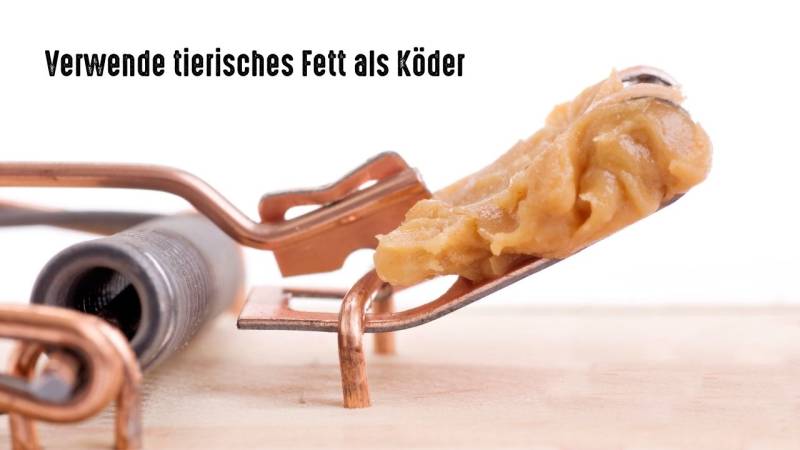
Animals know how valuable fat is. And almost every animal will therefore go for a piece of bacon, like kids go for chocolate ice cream.
Therefore, fat is the perfect bait for carnivorous animals. Particularly in cold environments, most scavengers and meat-eaters will give in to their hunger for calorie-rich fat, even if all their instincts scream: "No, don't stick your head in that device".
And what's really great is that the fat hardens when it gets cold. So, it becomes more difficult for animals to lick away the bait, and it is more likely that the trap will be triggered.
Read more: How to build a simple trap in an emergency.
2. Take care of your skin, hair, and leather
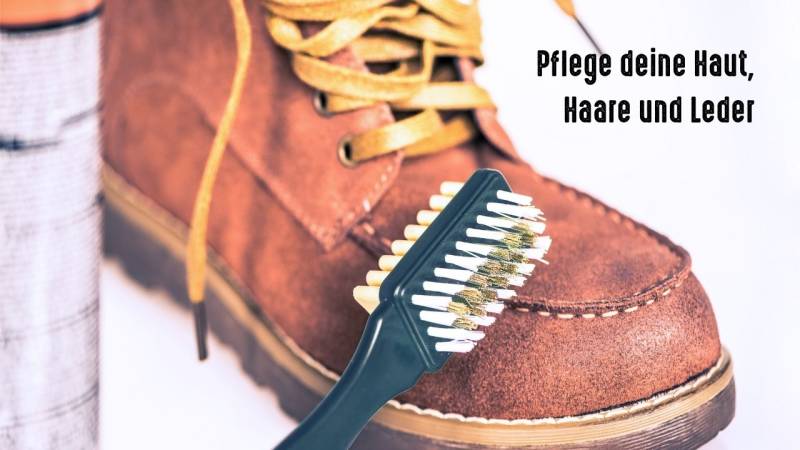
Dry air removes moisture from leather products, causing them to become stiff and more susceptible to cracking. Therefore, regularly rub your leather boots, leather gloves, or knife sheaths with fat and enjoy them for many years to come. Bear fat (if you can get it) is one of the best care products for leather.
Furthermore, dry, cracked skin on hands and feet can receive a healing boost when rubbed with animal fat. And why was a lumberjack's hair so shiny and soft in the past? It was a bit of bear fat. Seriously, fat is something our skin and hair crave.
3. Use animal fat as a healing salve
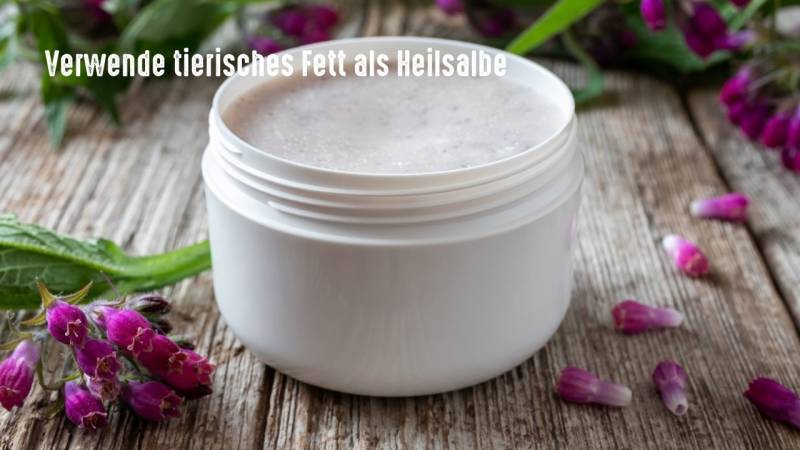
In many healing salves, oil and fat are the main ingredients.
And from now on, you'd better make your own healing salves for dry skin and injuries. Combined with medicinal plants, you can create a wide range of creams and balms for skin care, first aid, and other applications.
Dried yarrow and ribwort plantain are among my favorites when making salves with fat and oil. This salve helps stop minor bleeding and reduces the risk of infection from cuts and scratches.
Slowly heat the fat until it becomes liquid. Then add the medicinal herbs and let the mixture simmer over low heat. Then remove the leaves and collect the hot oil.
In a cold environment, you can now let the salve harden. If you're in warmer areas, add some beeswax. This will help the salve stay harder in warmer conditions.
Reading tip: Have a look at my e-book on how to make resin ointment.
4. Grease your tools
Grease is a wonderful lubricant and also a maintenance agent for metal.
I particularly grease my knife blades regularly, so that less rust forms. All iron and steel objects become more durable and longer lasting in this way. That means I grease my entire knife, from the sheath, to the wooden handle and up to the blade, regularly.
And before mineral oil was discovered, grease was used as a lubricant for all moving metal parts.
5. Transform animal fat into soap
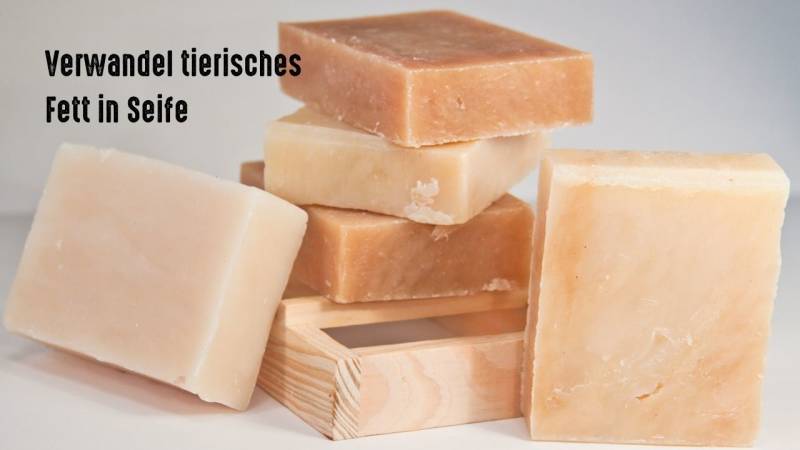
I still remember the first time I was present at the slaughtering of game. The rough white lumps were immediately thrown away. That was all fat. Our ancestors would have licked their fingers afterward.
But a more experienced survivor knows that these white lumps are pure gold, and in some situations, more valuable than the meat itself.
A refined use of rendered fat is the production of soap. The soap recipe has not changed for a thousand years. Although there have been new variations added along the way, the basic ingredients remain the same.
The right amount of fat is mixed with lye and water, then cooked and stirred until it feels like pudding. Thereafter, the mixture is poured into molds and hardened. The result: an effective homemade soap.
And just like grandma's lye soap worked back then, you can now make your own soap from fat.
6. Make Pemmican
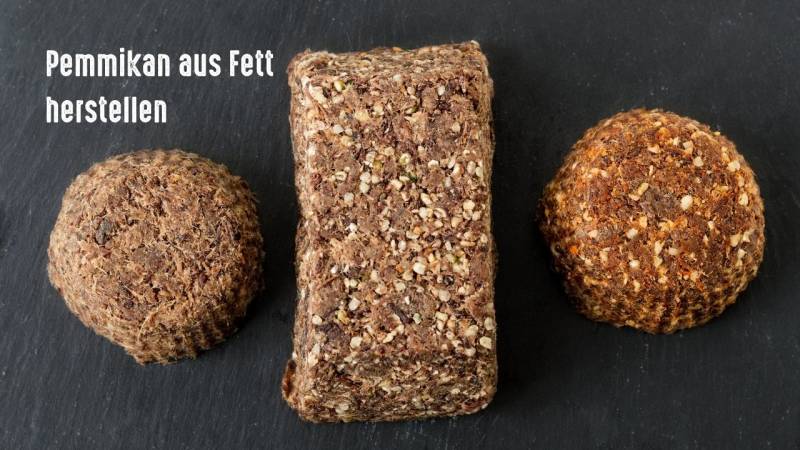
Pemmican is a nutritious and durable mixture of crushed dried meat and fat. Native Americans carried it as a travel ration and emergency food source.
And since fats is the most calorie-dense source and every calorie counts in an emergency, you should eat the fat or use it to prepare a meal.
If the fat is still edible, meaning it is not rancid, then use it for cooking or add it to other foods to increase their calorie content.
And Pemmican is an excellent example of how to process fat. Traditional Pemmican is a mixture of dried meat, ground to a powder, then mixed with warm animal fat and often supplemented with dried fruits, berries or carbohydrate-rich foods.
The complete recipe for Pemmican
You will need:
- 250 g dried meat or jerky (from about 1 kg of raw beef, deer, or buffalo meat)
- 250 g beef fat
- 1 tablespoon salt
- 1 tablespoon spices (optional)
Preparation:
- Melt the fat slowly in a pot over low heat. Be careful not to let it burn.
- As the fat is melting, use a blender to grind the dried meat and your spices into a powder.
- Once the dried meat is broken down into small shavings, add the salt and mix everything together well.
- Allow the melted fat to cool, then pour it over the ground dried meat and mix everything together well.
- Fill the mixture into a flat Tupperware or casserole dish and place it in the refrigerator. Alternatively, you can shape it into balls before refrigerating and allowing it to harden.
- Once the mixture has hardened, it can be cut into smaller pieces to serve as pemmican.
Store the pemmican in an airtight, cool, and dark place. It can also be frozen for later use. When stored properly, pemmican can last for years.
Recommended Reading: What is Pemmican? The original, sustainable, protein-packed superfood (+3 recipes)
7. Waterproof Equipment
Water and fat simply do not mix. Fat attempts to repel water at every opportunity. However, you can use this rivalry to your advantage.
Miners, hunters, and trappers used to coat their thin leather moccasins with animal fat to keep them soft and waterproof as they trudged through rain, mud, and snow.
Coat the seams of your leather clothing, knife sheath, or containers with a thick layer of animal fat. This will keep water out and keep you dry.
8. Use Animal Fat as a Firestarter in Wet Weather
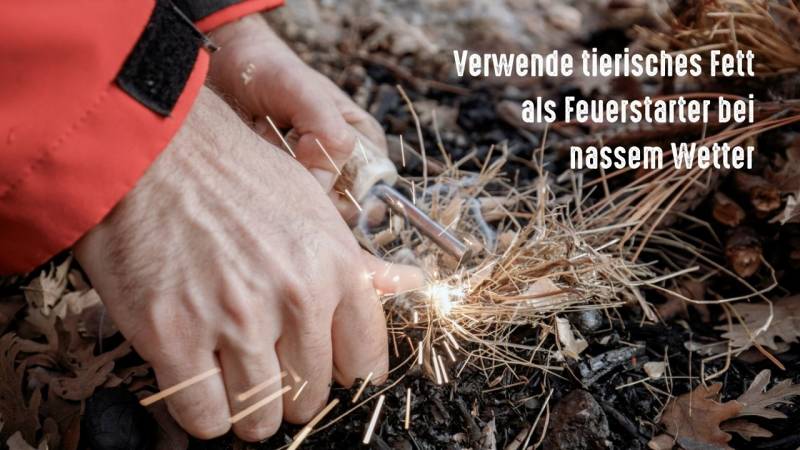
If you've ever seen (or caused) a grease fire in the kitchen, you know how flammable fat really is.
We know that fat is calorie-rich, but what are calories really? It's one of the most commonly used food energy units in the world.
To put it simply, it's something that can "burn" to produce heat. This is true when we consume digestible fats. It's also true when we light animal fat on fire.
Apply a bit of animal fat to some tinder and light it to get a firestarter for wet weather that burns for several minutes at high heat.
You can also apply fat to wood, charcoal, or other flammable materials to make them burn better and longer.
Recommended reading: How to Quickly and Easily Light a Fire with a Firestarter (Guide + Video)
9. As a Fire Extinguisher in Forging

The ability to make knives and other tools could be an essential skill in a longer emergency – or a lucrative side business in normal times.
Liquid animal fat or even cold solid lard is an excellent quenching fluid for knives and other forged items that need to be hardened.
Fat quenching is gentler than water quenching, and pig fat was a widely used extinguishing agent on the early American frontier. An animal fat quench also produces a food-safe protective coating that is better than many petroleum-based oils.
10. Making a Lamp from Fat
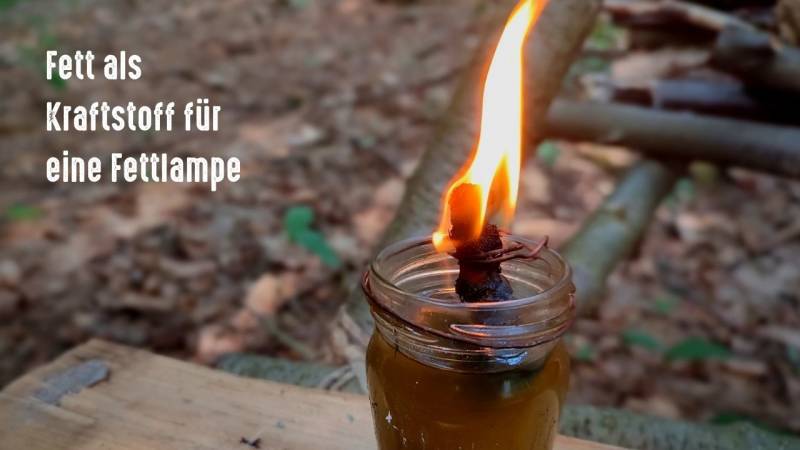
Animal fat can be used to create fat lamps for improved survival lighting (and can also be used to make candles).
Whether the fat comes directly from the animal and is still warm or you have processed it into lard, this important resource can serve a variety of survival purposes. One of the strangest uses is when you use fat as a light source.
Surprisingly, but true – from raw animal fat, you can literally make a "snowball candle." Just press the raw fat into a whitish ball, insert a plant fiber cord as a wick, and light it. You will have an "oily lamp" immediately.
Or for the more sophisticated survivalist, fill a fireproof container (such as a clay or stone bowl or a glass) with rendered lard and add a wick to make a primitive fat lamp.
If you would like to learn how to make a fat lamp step by step, take a look at my detailed video tutorial in the Wildimpuls program (in German).
How do you like the possibilities of use? Were there any that you didn't know before, or do you have another one? Write it in the comments.


Author of the guide
Martin Gebhardt
Hey, I'm Martin. On my blog, you will learn the basics and numerous details about living in the wild. I think survival, bushcraft and the good life in nature are the keys to happiness. Find me here on Instagram or on YouTube. You can find more about my mission on the About Me page.
Was this guide helpful?
23 people found this guide helpful.
5.00 out of 5 points (23 Ratings)
Comments (0)
This post may contain affiliate links. So if you click on the links and make a purchase, I will receive a small commission at no additional cost to you. Click here, to learn more about it.


